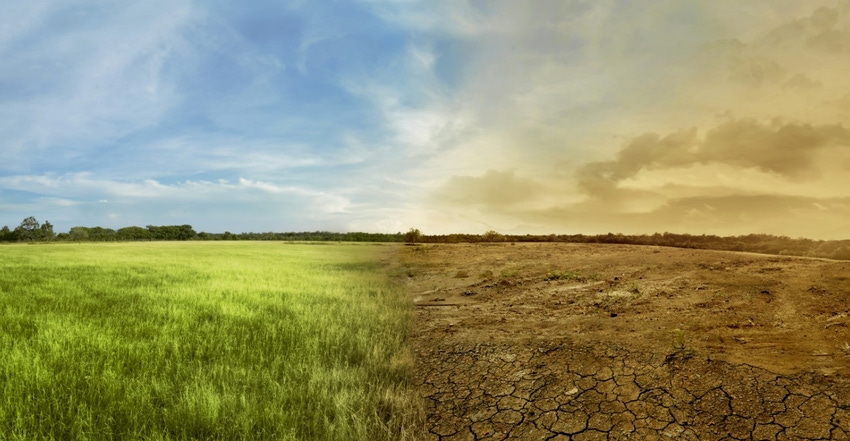
The world is faced with potential grain shortages while greater attention is being paid to the climate and environmental impact of agriculture. Can farmers help with both?
Secretary of Agriculture Tom Vilsack shared during a Senate Agriculture Committee hearing that he strongly believes farmers are up to the challenge.
“We think that there's an opportunity to increase productivity and be sustainable at the same time,” Vilsack says.
As part of the Biden administration’s focus on the climate, it proposed a 30x30 plan which calls to conserve 30% of U.S. lands by 2030.
He says this is part of an overall strategy that not only includes the 30x30 initiative but also taking a look at 33 climate-smart practices and having NRCS employees work collaboratively with farmers to adopt those practices. He adds it's about renewable energy, better forest management and adaptation mitigation. “We're trying to sort of address this in a very comprehensive way,” he says.
Sen. Joni Ernst, R-Iowa, asked Vilsack whether the 30x30 initiative will be used to undermine private property rights? Vilsack committed that the 30x30 plan will respect private property rights and any connection with conservation activities will be voluntary and farmer led.
And those farmer-led decisions also start with how farmers want to participate in conservation programs.
This week USDA made the welcomed decision that it would allow producers to start field work early on expiring Conservation Reserve Program contracts. Over 1 million acres are coming back into production as their CRP contracts expire which some may say decreases total land in reserve, however, Vilsack says they’re seeing an increase of activity in terms of CRP on grasslands as well as over-enrollment in popular programs such as the Environmental Quality Incentives Program and Conservation Stewardship Program.
“We trust farmers to make the right choice and set of decisions for their operation,” Vilsack says. “In the meantime, we’re looking for ways in which we can provide more resources from the conservation programs EQIP, CSP, [Regional Conservation Partnership Program] to climate-smart agricultural initiatives.”
Vilsack says all of those investments in the conservation programs fall within the rubric of a voluntary, farmer-led 30x30 effort.
The Senate overwhelming passed the Growing Climate Solutions Act in 2021 which Vilsack says provides a vehicle through which USDA can provide the level of technical assistance to farmers and producers to be able to understand and appreciate climate-smart practices. He says USDA continues to provide technical assistance to both the House and Senate to try to find common ground in terms of the climate-smart agriculture and forestry products initiatives.
USDA recently announced an overwhelming response to its request for climate-smart commodity pilot projects which will provide resources to enable farmers to not only increase adoption of the climate-smart practices, but provide an opportunity to measure, verify and quantify the results from those practices that will allow USDA to better understand how to essentially establish the standards for climate-smart commodities.
“It's a chance for us to really understand to be ahead of the game for American agriculture, to lead not just our own domestic effort, but internationally to respond back and to push back a little bit on some of the other approaches to this that are occurring in other parts of the world that we think will jeopardize the ability to increase productivity,” Vilsack says, likely referencing the EU’s approach without biotechnology and crop protection tools.
But another contradiction raised by the Biden administration is a recent Solicitor General brief filed by the Biden administration’s top lawyer that encourages states have the right to supersede federal pesticide labeling requirements in a glyphosate case. This week ag groups asked the Biden administration to withdraw the brief, and Vilsack also expressed concerns on the ability for U.S. farmers to remain productive and still implement climate-smart practices such as no-till.
If glyphosate is no longer available to producers, Vilsack says, “I think it would obviously impact and affect production, and I think it would obviously impact and affect our ability to deal with climate. One of the strategies for dealing with climate is obviously no-till activities.”
Vilsack says he doesn’t know precisely what the reasoning and rationale behind the Solicitor General’s decision, “but I would say that we’ve been very clear with the EPA and our conversations about these crop protection goals that we have to follow the science.”
The world needs U.S. farmers to step up to the plate, both on increasing productivity and mitigating the climate. But the government needs to make sure they’re not putting up roadblocks along the way.
About the Author(s)
You May Also Like






